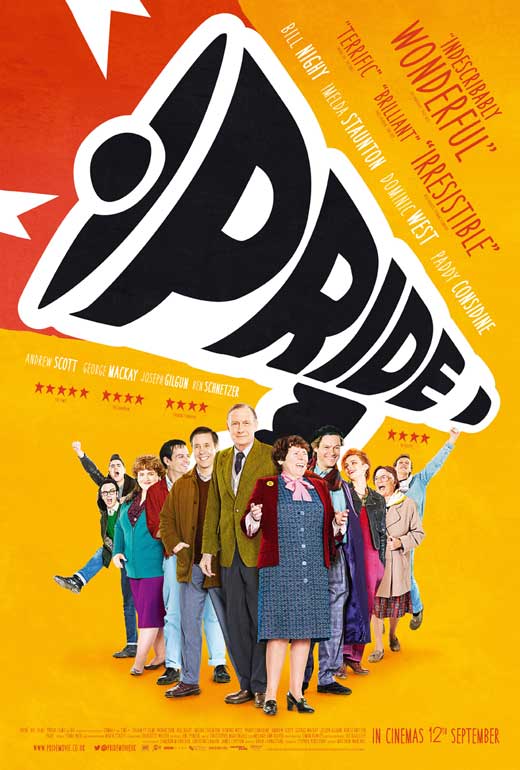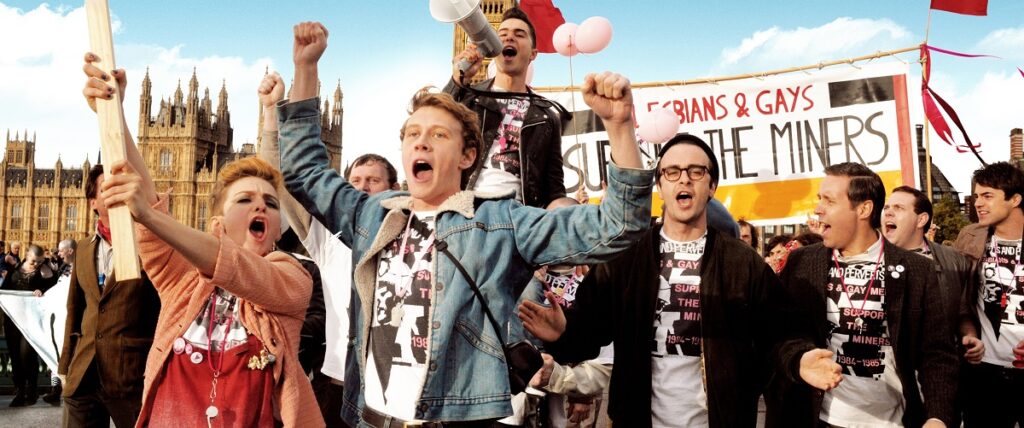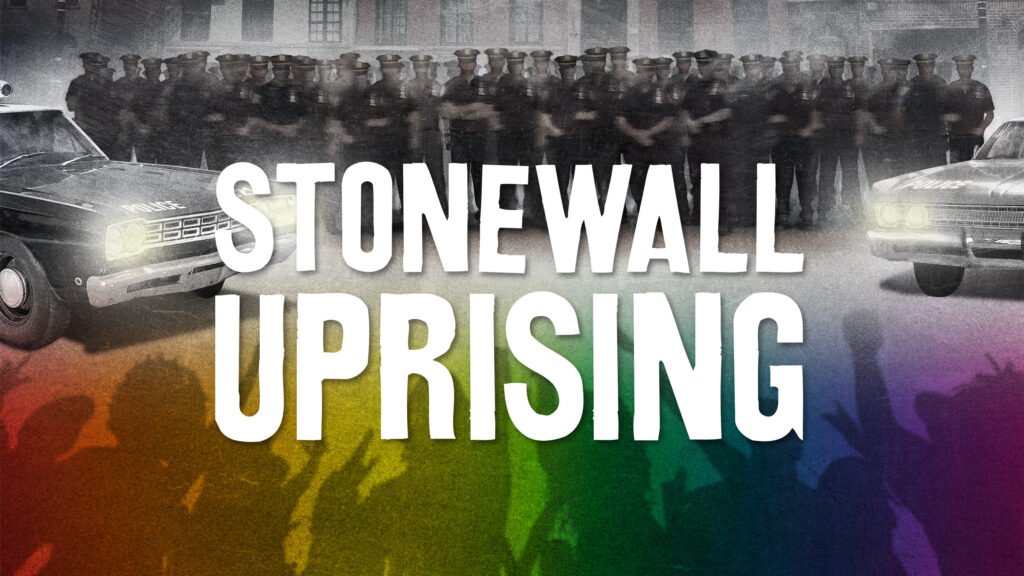
Pride, starring some big names like Bill Nighy, Imelda Staunton, Dominic West, and Andrew Scott, follows lesbian and gay activists who, after realizing the police are no longer harassing them and are now targeting miners, decide to start raising money to help families affected by the British miners’ strike of 1984. Overall, the film depicts a number of nonviolent tactics throughout, from all sides, both effective and ineffective.
The main goal of the activist group, known as Lesbians and Gays Support the Miners (LGSM), is to raise money to help during the strike, and throughout the film, this goal shifts into general support and solidarity with the miners. LGSM sets up a headquarters in the infamous London bookshop, Gay’s the Word. First, the main activist, Mark Ashton, puts together a bucket collection to raise money on the streets and in gay bars, much to everyone’s dismay. They receive pushback from the public because of their sexuality, and other members of the LGBTQ+ community are not receptive of the idea due to the miners’ past treatment of them, which leads to in-fighting. After attempting another tactic—cold calling local businesses for help—and failing, LGSM decides to take donations directly to a mining village in Wales.
The Women’s Support Group in the village ultimately decides to allow LGSM into their town hall to thank them, but after a speech by Mark, a dissenter in the women’s group, Maureen, leads a walk-out to express disapproval. The events at the town hall highlight more fractures between groups, this time the village and LGSM. Despite the unsettling meeting, members of LGSM are permitted to stay in one of the main miner’s home, which later leads to a network of overnight hosting by other members of the village. After the meeting, it is revealed that the police have taken a group of miners, and with the helpful knowledge of a member of LGSM, another villager, Sian, demands the release of the illegally detained men, furthering the solidarity between groups.
Unfortunately, that solidarity is disrupted again by Maureen, who sells a demonizing story about LGSM and the supporting villagers to the tabloids. The group, however, decides to use it to their advantage and hosts a large concert, “Pits and Perverts,” which succeeds in raising thousands of pounds for the miners. They make t-shirts, posters, and other items to hand out and spread the word, which is obviously a very effective strategy. Unfortunately, Maureen uses the event to justify moving the time of a town hall meeting where folks were supposed to vote to sustain or stop LGSM’s support, and ultimately, gets the vote she wanted. By the end of the film, LGSM has become split from the main LGBTQ+ movement, which is highlighted during the big pride parade, as in-fighting within the community has heightened because of the miners. Another group, Lesbians Against Pit Closures, also formed to separate lesbians from the more mainstream, male LGSM movement. Both groups are told they must march at the back of the parade. Eventually, busloads of miners from towns show up at the march with their own banners, and together, the groups are permitted to march at the front of the parade.

While the film is not explicitly about nonviolent tactics and strategies, many are portrayed throughout. The cold calling is clearly not a useful tactic in this sense, but the various ways of receiving donations—money, clothes, and others—are very effective, especially the very public concert that was advertised as being open to gay and straight folks. Using t-shirts and posters to draw attention to the event seemed to work as a strategy. I believe the best tactic happened at the end, with the ultimate display of solidarity during the pride parade. There were also clearly fringe groups throughout the film, including the miners and families who did not support LGSM—who later decided to show support due to being outnumbered—and the LGBTQ+ groups that were separated from the mainstream movement. Interestingly, the tactics utilized by Maureen and other dissenters, including using the newspaper to leak a story, the walkout, and moving the town hall meeting, never truly work. There were simply not enough supporters on her side for these tactics to be effective.
Pride never overtly uses the nonviolence jargon we know and love, but it is obvious that these historical groups knew what they were doing when it came to strategizing. This is a good film to show in a course about nonviolence, as long as the instructor points out some of the less obvious uses of tactics and strategies. There is much to learn from LGSM and the other groups in this heartwarming film, as it displays an effective coalition between very different groups trying to gain human rights, something of which scholars of nonviolence and nonviolent tactics would be proud.
